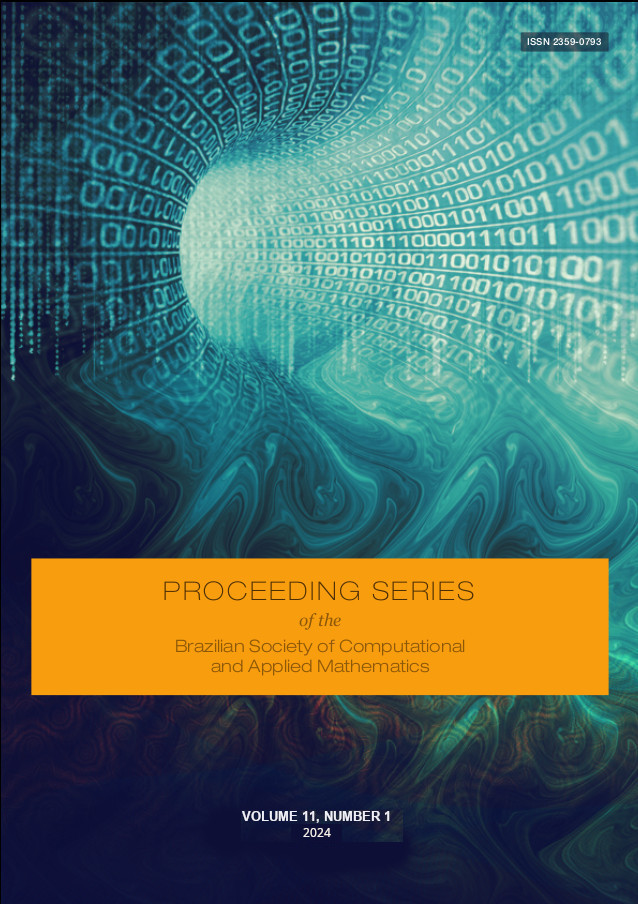Some Lagrangian Calculations for Isotropic Random Fields
DOI:
https://doi.org/10.5540/03.2025.011.01.0483Keywords:
Isotropic fields, Fourier modes, Taylor expansion, passive trace transportAbstract
This work presents a general form for a two-dimensional, mean-zero, homogeneous, stationary, incompressible, and isotropic random velocity field which is written as a sum of many Fourier modes. We assume that the Lagrangian auto-covariance function can be written as a Taylor series and then we develop a methodology to evaluate such Taylor coefficients. Additionally, we identify a notable pattern in terms associated with the highest moments of the random magnitudes for each order. We analyze the convergence of the Taylor series formed only by those terms.
Downloads
References
S. Corrsin. “Atmospheric diffusion and air pollution”. In: Advances in Geophysics, 6 (1959), p. 161.
F. W. Elliott and A. J. Majda. “Pair dispersion over an inertial range spanning many decades”. In: Physics of Fluids, 8.4 (1996), pp. 1052–1060.
E. S. Schneider. “Estatistical Properties for Trigonometric Random Fields”. In: Proceeding Series of the Brazilian Society of Computational and Applied Mathematics 9.1 (2022). doi: 10.5540/03.2022.009.01.0255.
E. S. Schneider. “Exact calculations for the Lagrangian velocity”. PhD thesis. Bowling Green State University, 2019.
E. S. Schneider and C. L. Zirbel. “Using symbolic expressions to get the Taylor expansion of the Lagrangian auto-covariance function”. In: Proceeding Series of the Brazilian Society of Computational and Applied Mathematics 8.1 (2021). doi: 10.5540/03.2021.008.01.0504.
G. I. Taylor. “Statistical Theory of Turbulence”. In: Proceedings of the Royal Society of London, A 151.873 (1935), pp. 421–444.
W. A. Woyczynski. “Passive tracer transport in stochastic flows”. In: Stochastic Climate Models, 49 (2012), pp. 385–396.

